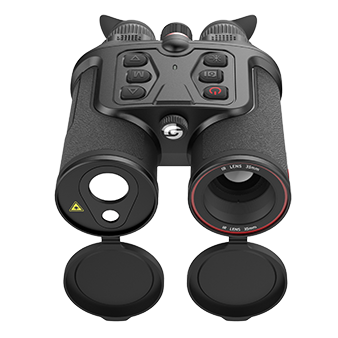
# Thermal Imaging Binoculars: Advanced Night Vision Technology
## Introduction to Thermal Imaging Binoculars
Thermal imaging binoculars represent a significant leap in night vision technology. Unlike traditional night vision devices that rely on amplifying available light, thermal binoculars detect infrared radiation emitted by objects, providing clear images even in complete darkness.
## How Thermal Imaging Works
Thermal imaging technology operates by capturing the heat signatures emitted by all objects above absolute zero. The binoculars convert these infrared signals into visible images, with warmer objects appearing brighter against cooler backgrounds. This principle makes thermal imaging particularly effective for:
- Search and rescue operations
- Wildlife observation
- Security and surveillance
- Military applications
## Key Features of Modern Thermal Binoculars
High-Resolution Displays
Contemporary thermal binoculars feature high-resolution displays that provide crisp, detailed images. Many models offer resolutions of 640×480 or higher, ensuring excellent image quality for precise identification.
Long Detection Ranges
Advanced models can detect heat signatures at distances exceeding 1,000 yards, making them invaluable for long-range observation in various professional settings.
Durability and Weather Resistance
Most thermal binoculars are built to withstand harsh environmental conditions, featuring waterproof and shock-resistant designs suitable for field use.
## Applications Across Industries
Military and Law Enforcement
Thermal imaging binoculars have become essential tools for military operations and police work, allowing personnel to detect threats and navigate in complete darkness.
Hunting and Wildlife Observation
Hunters and wildlife researchers benefit from the ability to track animals based on their heat signatures, regardless of lighting conditions or camouflage.
Industrial and Building Inspection
These devices help identify heat leaks in buildings, detect electrical faults, and locate overheating equipment in industrial settings.
## Choosing the Right Thermal Binoculars
When selecting thermal imaging binoculars, consider:
- Detection range requirements
- Image resolution needs
- Battery life
- Additional features like video recording or wireless connectivity
- Budget constraints
## The Future of Thermal Imaging Technology
As technology advances, we can expect thermal imaging binoculars to become more compact, affordable, and feature-rich. Emerging developments include:
- Enhanced image processing algorithms
- Integration with augmented reality systems
- Improved battery technologies for longer operation times
- Higher resolution sensors at lower price points
Thermal imaging binoculars continue to revolutionize night vision capabilities across multiple sectors, offering unprecedented visibility in challenging conditions.
Keyword: thermal imaging binoculars
